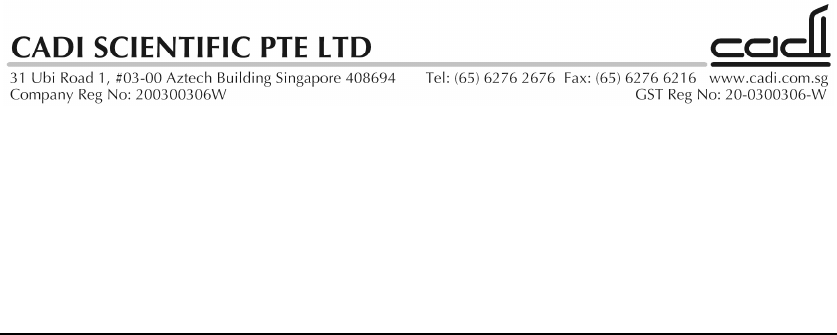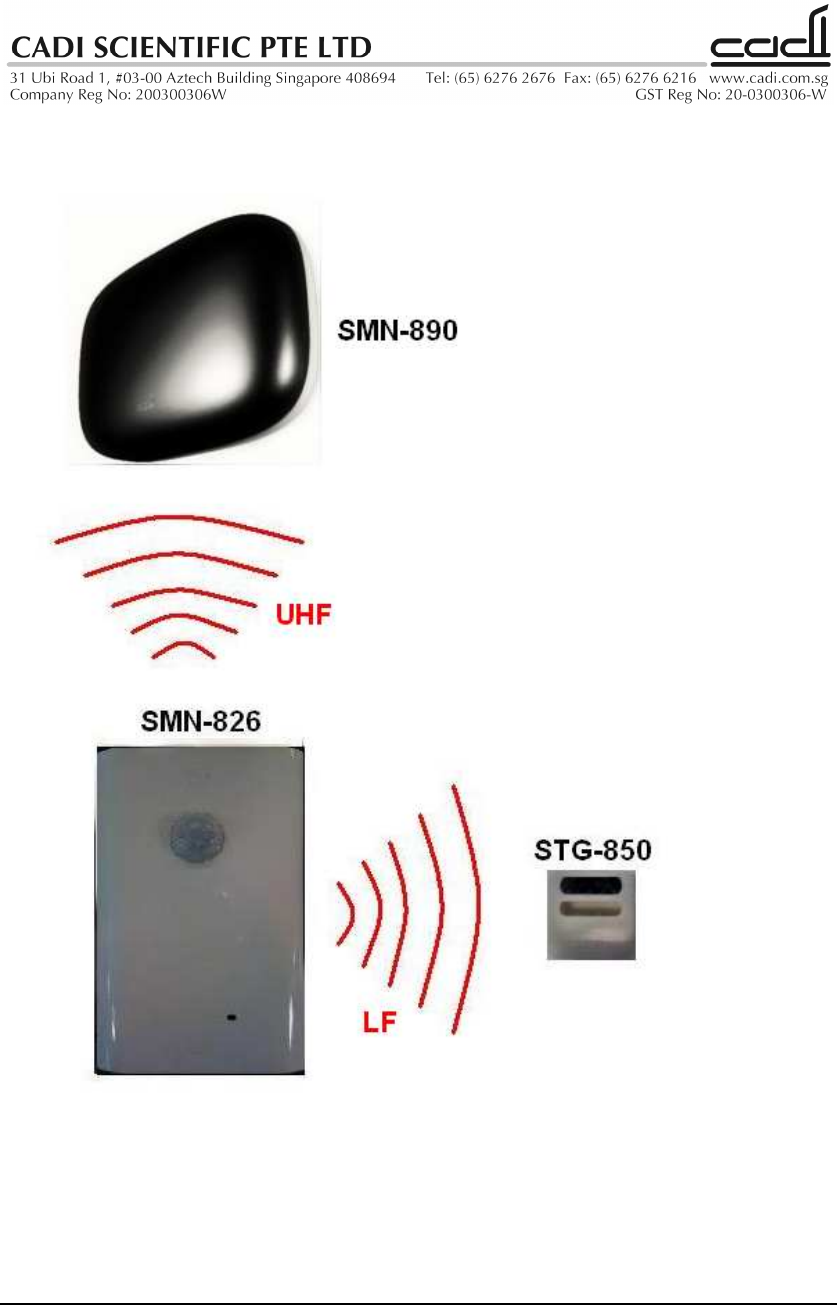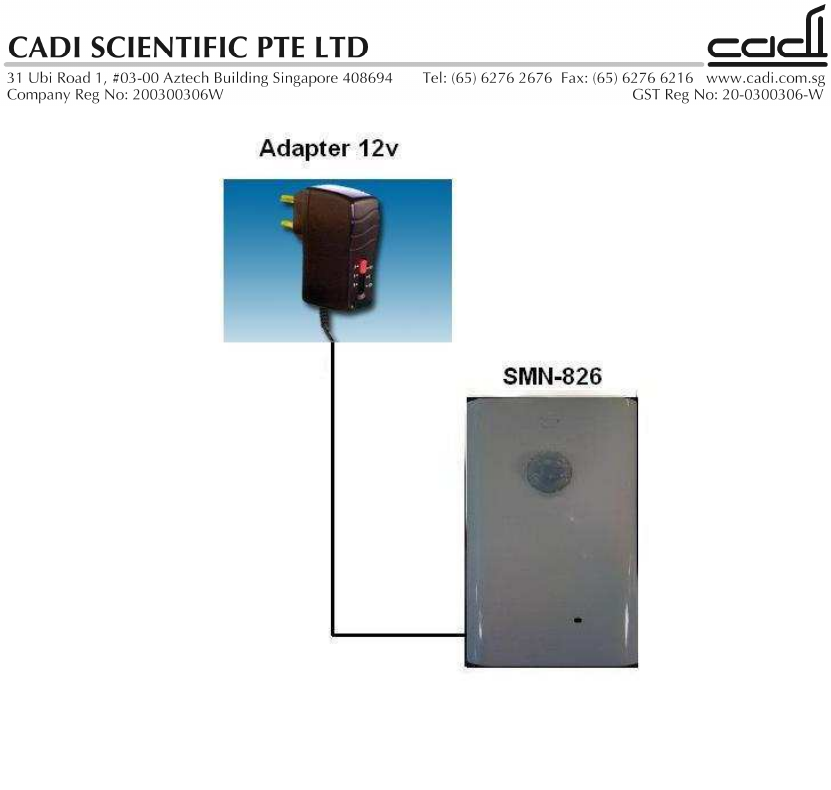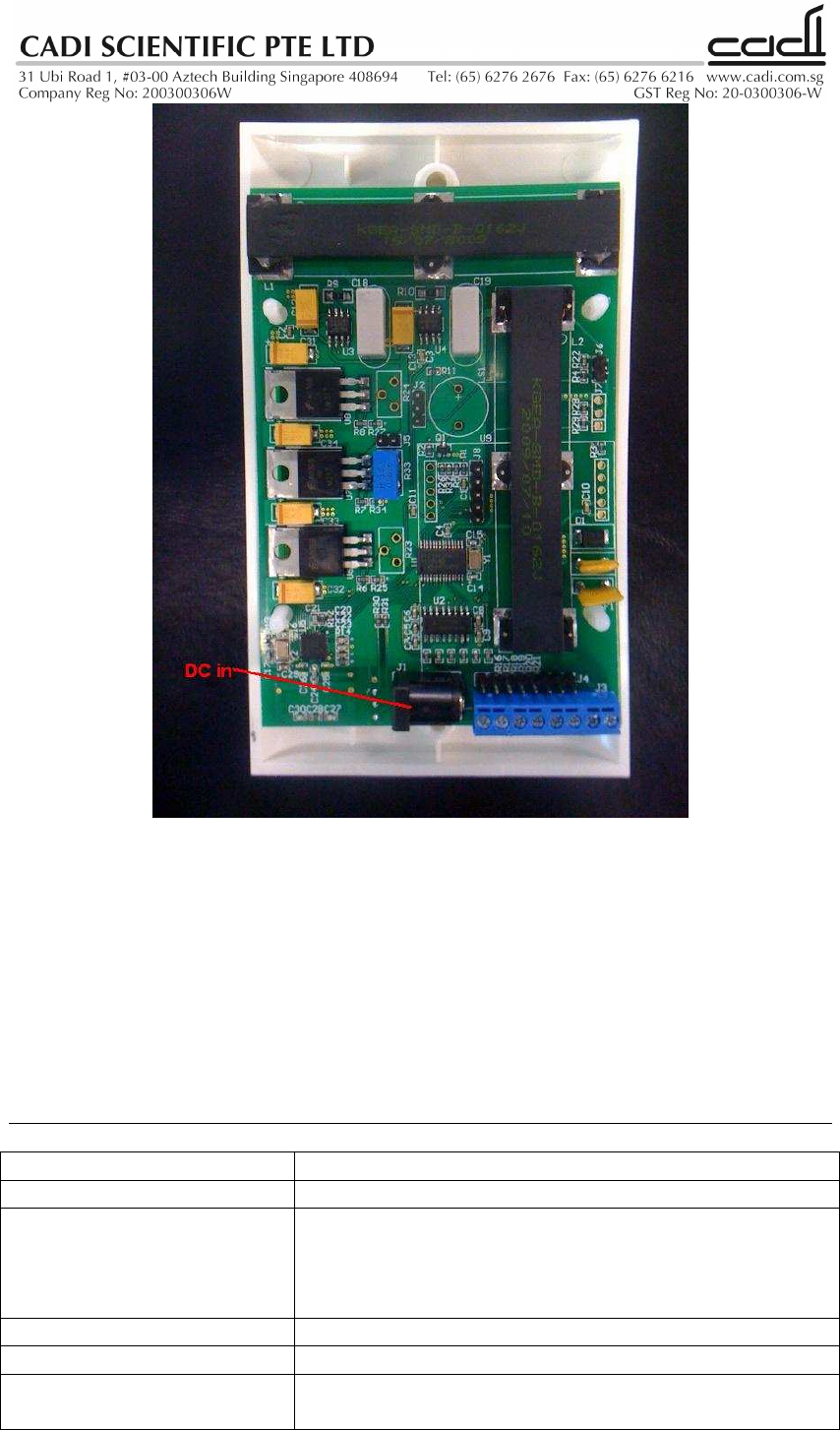Cadi Scientific SMN826 SMARTNODE User Manual SMN 826 general 1028
Cadi Scientific Pte. Ltd. SMARTNODE SMN 826 general 1028
Users Manual

SMN-826
Instruction Manual
WARNINGS
For customer in the U.S.A and Canada
• You are cautioned that changes or modifications not expressly approved
by the part responsible for compliance could void the user’s authority to
operate the equipment.
• This equipment has been tested and found to comply with the limits for a
Class B digital device, pursuant to part 15 of the FCC rules. These limits
are designed to provide reasonable protection against harmful interference
in a residential installation. This equipment generates, uses and can
radiate radio frequency energy and, if not installed and used in accordance
with the instructions, may cause harmful interference to radio
communications. However, there is no guarantee that interference will not
occur in a particular installation. If this equipment does cause harmful
interference to radio or television reception, which can be determined by
turning the equipment off and on, the user is encouraged to try to correct
the interference by one or more of the following measures:
- Reorient or relocate the receiving antenna.
- Increase the separation between the equipment and receiver.
- Connect the equipment into an outlet on a circuit different from that to
which the receiver is connected.
- Consult the dealer or an experienced radio/TV technician for help.
• Operation is subject to the following two conditions:
1) This device may not cause interference and
2) This device must accept any interference, including interference that
may cause undesired operation of the device.
• This equipment complies with FCC radiation exposure limits set forth for
an uncontrolled environment. End users must follow the specific operating
instructions for satisfying RF exposure compliance. This transmitter must
not be co-located or operating in conjunction with any other antenna or
transmitter.

For customer in Europe
• This equipment has been tested and found to comply with the limits set out
in the R&TTE Directive.
• Where you see this symbol on any of our electrical products/packaging in
Europe, it means that at end of life the product/battery must be disposed of
in accordance with any applicable laws or requirements for the separate
disposal of electrical equipment/batteries.
• The manufacturer of this product is CADI Scientific Pte Ltd, 31 Ubi Road 1,
#03-00 Aztech Building, Singapore 408694.
PRECAUTIONS
• Connect only recommended power supply to unit.
• Mount unit securely.
USAGE
The SMN-826 SmartNODE transmits LF and UHF signals continuously. It is
designed to work with other devices in the SmartSense system.
The SMN-826 contains a PIR motion sensor to detect human presence.
The LF signal starts transmitting continuously on detection of human presence
and can be received by some devices such as SmartTAG STG-85x.
The UHF signal is a beacon transmitted every 1 minute to let other devices
such as SmartNODE STG-890, for the SmartSense system to know its status.

SETUP
The SMN-826 requires external power supply for it to function. This can be
provided by a suitable adapter (e.g. 12vdc 1A) as shown.


Once plugged in, the SMN-826 will automatically be turned on. When motion
sensor has detected human presence, it will blink its LED to indicate operation.
SPECIFICATIONS
Power 12v dc
Power consumption Max 12VA
External dimensions
(excluding maximum
projecting
parts)
87 x 147 x 41 mm
Mass Approx. 220 g (0.5 lb)
Operating temperature 20°C - 50°C (68°F - 122°F)
Storage/transport
temperature 10°C - 50°C (50°F - 122°F)

Inputs/outputs DC connector x1
Terminal block x1
Supplied accessories None
Transmission frequency 868.4 MHz (For customer in Europe)
919.8 MHz (For customer in U.S.A)
925.0 MHz (For customer in U.S.A)
125 kHz (all regions)
Note: Changes or modifications not expressly approved by the party
responsible for compliance could void the user's authority to operate the
equipment. (15.21)
This device complies with part 15 of the FCC Rules. Operation is subject to
the following two conditions: (1) This device may not cause harmful
interference, and (2) this device must accept any interference received,
including interference that may cause undesired operation.(15.19(a)(3))